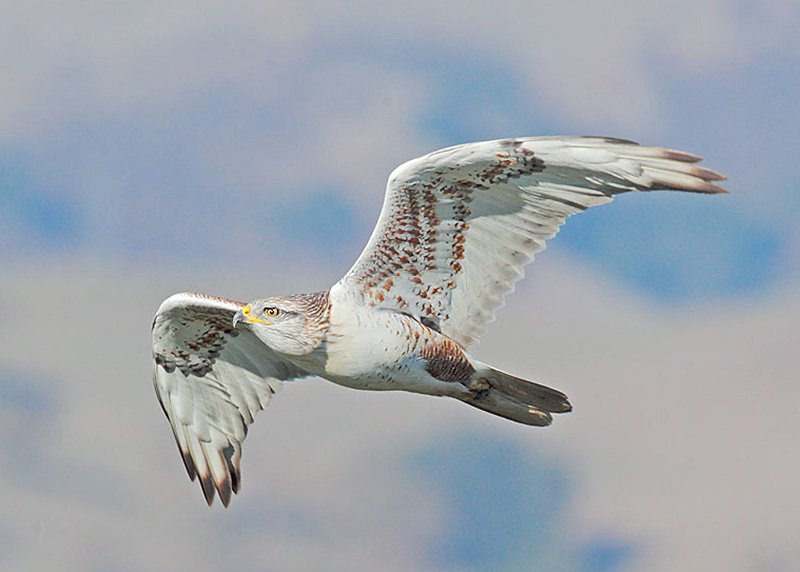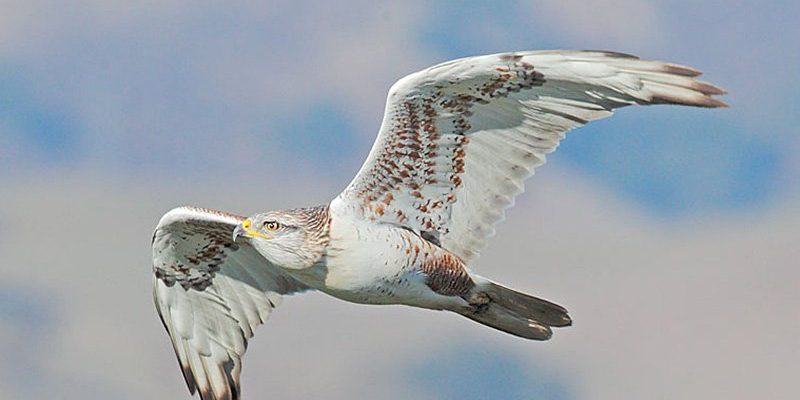
Think of a ferruginous hawk’s calls like a language. Just as we use different tones and pitches to convey emotions or messages, these birds do the same. Their vocalizations can signal everything from warnings to courtship rituals. So, let’s dive into the world of ferruginous hawk vocalizations and uncover what these powerful sounds really mean.
Understanding Ferruginous Hawk Vocalizations
Ferruginous hawks have a repertoire of sounds that can tell you a lot about their behaviors and feelings. Typically, their calls can be broken down into a few main categories, each serving a distinct purpose.
– Alarm Calls: These sounds are high-pitched and sharp. When a ferruginous hawk feels threatened, it emits quick and repetitive calls to warn others. Imagine it as them saying, “Hey, danger’s near!” This alert can be critical for the hawk’s survival, as it lets nearby birds know to be on high alert too.
– Courtship Calls: During mating season, males often create softer and more musical sounds to attract females. It’s a delicate dance of sound, where the right tone might win a mate’s attention. You might think of it like a romantic serenade, but instead of a guitar, they wield their voices.
– Territorial Calls: When defending their territory, ferruginous hawks will use deeper, more resonant calls. These vocalizations serve as a clear message to other hawks: “This is my space!” It’s all about establishing boundaries and ensuring they have plenty of room to hunt and nest.
In summary, the ferruginous hawk’s vocalizations play a key role in their daily lives. They’re not just random noises; each sound carries meaning, much like how our words do.
The Importance of Vocalizations in Communication
Birds are fascinating creatures, and vocalizations are one of their primary means of communication. For ferruginous hawks, calls and sounds are essential for survival and social interaction.
When a hawk lets out an alarm call, it isn’t just for itself—it’s a signal to others in the area about potential danger. This communication helps preserve the local bird population. Think of it as a group chat where everyone stays informed.
Additionally, vocalizations help in reinforcing social bonds among hawks. Whether it’s mating calls or calls between parents and their young, these sounds strengthen connections. Birds that are well-connected often fare better in survival, just like humans who have strong social networks.
Lastly, the environment plays a vital role in how these vocalizations are received. In open areas, sound travels differently than in dense forests. Ferruginous hawks have adapted their calls to ensure they’re heard far and wide. This adaptability showcases the intelligence of these raptors.
Types of Vocalizations and Their Meanings
So what exactly do these vocalizations sound like, and what do they mean? Let’s break down the most common types.
Alarm Calls
As mentioned, alarm calls are sharp and quick. You might hear a series of loud “kak-kak-kak” sounds. This rapid-fire vocalization indicates immediate danger, like the presence of a predator. When you hear this, it’s like the hawk is shouting, “Get down! Something’s wrong!”
These calls can be particularly loud and can travel over long distances, which is why other birds nearby quickly pay attention.
Courtship Calls
When it comes to courtship, the ferruginous hawk becomes a bit more melodic. Their calls during mating season can include a series of softer whistles or trills. Picture a gentle love song—the kind you’d hum to express affection.
These vocalizations are often accompanied by aerial displays, where males will soar high in the sky, all the while singing their praises to attract a mate.
Territorial Calls
Territorial calls tend to be lower in pitch and more booming. You might hear a loud, hoarse “kreee” or “kree-kree.” This is the hawk’s way of saying, “I am here, and this is mine!”
These calls are crucial, especially during the breeding season when they need to keep competitors at bay. Their strong presence is communicated through these deep sounds.
The Role of Vocalizations in Breeding
Breeding season is a busy time for ferruginous hawks. Their vocalizations become even more important, not just for attracting a mate but also for raising their young.
During courtship, males will impress females with a series of calls and aerial maneuvers. This combination of vocal and physical displays helps females choose strong partners. The quality of the calls can indicate the hawk’s health and vitality, much like a beautiful song can hint at a talented singer.
Once paired, both parents will vocalize to communicate about tasks such as hunting and caring for their chicks. Their calls help coordinate these activities, ensuring the family unit remains strong and functional.
How Do Vocalizations Change Over Time?
Over time, vocalizations can change based on various factors. Young ferruginous hawks initially have different calls compared to adults. They start with softer and less confident sounds, learning to mimic and refine their voices through experiences.
Much like learning to speak, a young hawk listens and practices its calls, gradually developing into the robust vocalizations characteristic of adults. This learning process can make each hawk’s voice slightly unique, much like how human accents develop.
Environmental factors, too, can influence vocalizations. Hawks living in more urban settings may develop different calls to be heard over noise pollution, while those in more natural settings stick to their traditional sounds.
In conclusion, the ferruginous hawk’s vocalizations are a critical part of its life. From signaling danger to wooing a mate, these calls convey a rich language that connects them with other hawks and their environment.
So, next time you’re outside and hear that distinctive sound, take a moment to appreciate the story behind it. Each call is a reminder of the intricate world of wildlife communication, where even the simplest sounds can hold profound meanings. Understanding these vocalizations not only enhances our appreciation for these beautiful birds but also helps us recognize the delicate balance of nature they navigate every day.

